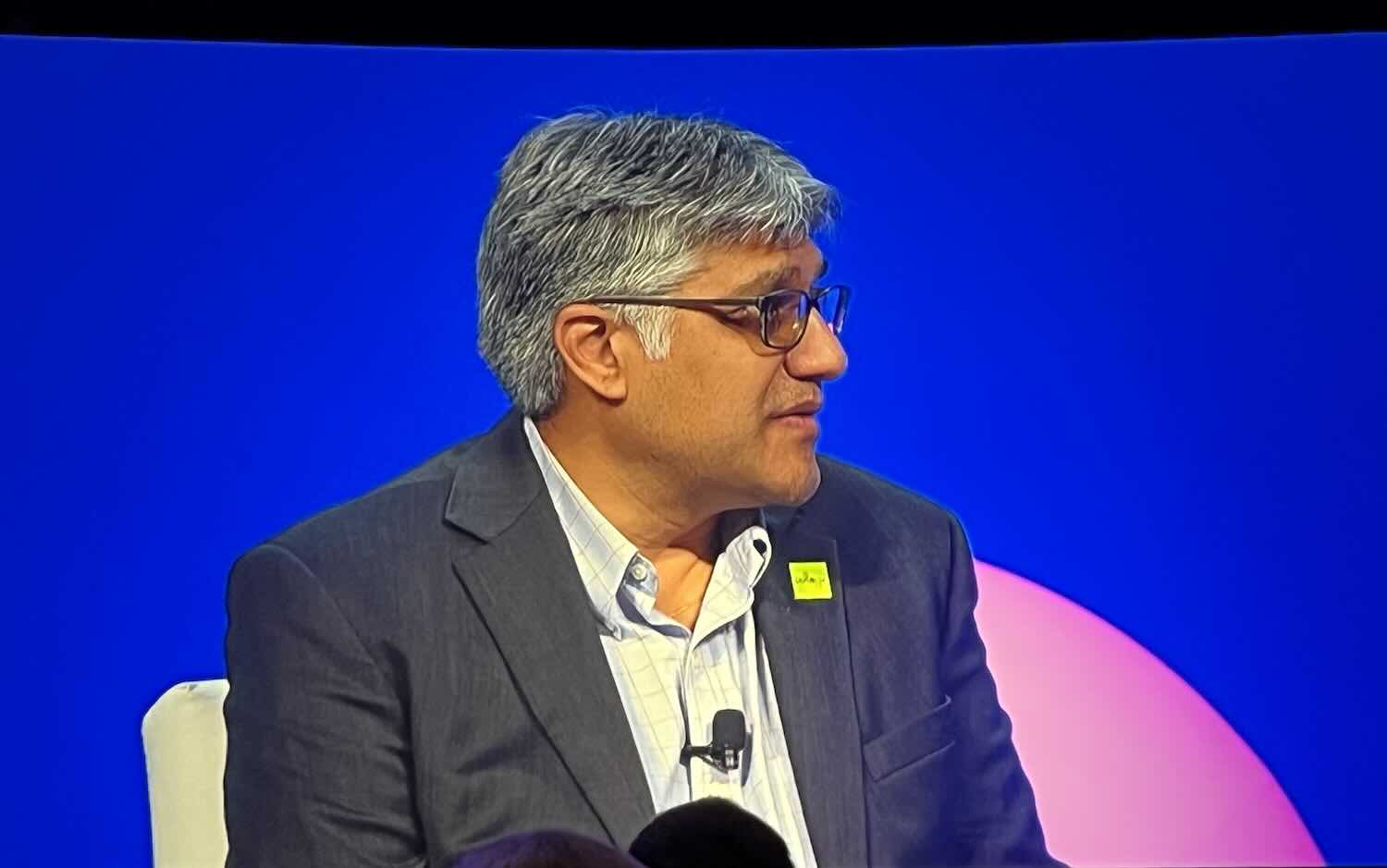The decision facing investors, from American families with 401(k)s to managers of the world’s largest pension and sovereign wealth funds, is whether to bet on the low-carbon energy transformation now well under way – or stick with business-as-usual.
At stake is not only retirement security but whether the end of the fossil fuel era is a crash landing or a (relatively) smooth transition – and whether the low-carbon future comes quickly enough to avert the most extreme effects of climate change.
The shape of that low-carbon future is becoming clearer, as first coal, and now oil and gas, give way to solar, wind and battery power. Can I interest you in a soot-belching coal plant? Thought not. How about a tar sands pipeline or long trains of coal or Arctic drilling?
The cost of solar generation has fallen more than 60 percent since 2009 and could drop another 40 to 60 percent by 2025, making solar the cheapest form of energy almost everywhere in the world. The cost of lithium-ion battery storage – key to both solar power and electric cars – has fallen below $350 per kilowatt-hour, down by more than two-thirds since 2010, and could fall below $100 per kWh within a decade.
With 60 percent of new utility-scale electricity generation in 2016 coming from wind and solar resources, renewable are no longer ‘alternative.’ Rather, fossil fuels are increasingly ‘legacy.’ Coal production for 2016 was down an estimated 17 percent from 2015, continuing its eight-year fall from peak coal production in 2008.
Technology Story
Mobile, distributed, connected, smart and, oh yeah, clean, solutions are only getting better and cheaper. Low-carbon energy supply and demand are both climbing the hockey stick up and to the right. That growth has been spurred by policy; it didn’t hurt at all that Congress in its infinite bipartisan wisdom last year extended the solar and wind investment and production tax credits for five years instead of the usual one. But as the energy story becomes, solidly, a technology story, policy is no longer the driver. Instead, renewable energy is showing the same kind of network effects, increasing returns to scale and virtuous circles that have powered the tech revolution.
To be sure, Wilder Hill’s Cleantech Index was down 22 percent last year. Solar stocks have taken huge hit while oil and gas stocks have rebounded from their lows. Brent crude oil is selling for about $55 a barrel, compared to about $28 a year ago. (That’s still less than half the peak price of $116 in June 2014, and any OPEC efforts to cut production seem to be met by increased supplies of U.S. shale oil.)
The real signal to watch is the oil companies’ “capex” or capital expenditure budgets, where they reveal what they really think about future prospects. Chevron’s 2017 capex estimate is $19.8 billion, down 15 percent from 2016 and a whopping 42 percent from 2015. Other major oil companies are also cutting back. It’s not just activist college campuses that are divesting from the fossil-fuel economy. It’s the fossil-fuel producers themselves.
When the history of the 21st century is written, we’ll see that by 2017 the inflection point in the global energy rebuild had already occurred. We’ll see the new energy economy as part of the larger technology transformation obviously well underway. We’ll see that the energy revolution of the next 20 years looked a lot like the Internet revolution of the last 20 years.
I covered that one too, back in the day, and I think this one’s an even bigger story. Everybody now claims that they knew all along that the Internet’s open protocols and the Web’s open architecture would carry the day, but even through the mid-1990s, it just wasn’t so. Then, as now, the heavy weight of conventional wisdom fell on the side of business-as-usual.
Disrupt Carbon
A new report from the Carbon Tracker Initiative in London lays down the outlines of the case that the energy industry’s business-as-usual has already been demolished. The Carbon Tracker report suggests coal demand could peak in 2020 and fall to half the 2012 level by 2050. Oil demand could be flat from 2020 to 2030 and then fall steadily. Most major oil and gas companies do not expect peak coal before 2030 and none see oil peaking before 2040.
Electric vehicles (EVs) alone could reduce demand for oil by 2 million barrels of oil per day (mbd) by 2025, the report said, about the same amount that caused the price of oil to collapse in 2014 and 2015. By 2040, electric vehicles could displace 16 mbd of oil and 25 mbd by 2050. The oil industry generally sees continued growth in demand.
Even small changes in demand can send major ripples through energy markets. The Carbon Tracker report cites the collapse of the U.S. coal industry caused by a loss of 10 percent of the market for power generation, and the loss of more than 100 billion euros by Europe’s five major utilities from only an 8 percent growth in renewables between 2008 and 2013. A separate Goldman Sachs report last year forecast solar and wind will generate more new energy capacity in the next five years than the shale-oil revolution did in the last five.
Forecasts are dicey and these transitions always unfold in unpredictable ways. But students of disruptive innovation over the last several decades will recognize the pattern. Solar panels and electric cars, once derided as fringe products for niche markets, are marching to dominance far faster than oil companies admit.
Solar energy could supply 23 percent of global power by 2040, according to Carbon Tracker. (ExxonMobil sees all renewables supplying only 11 percent by then.) Electric vehicles could capture a third of the transport market by 2035, the report found. (BP’s EV forecast for that year: 6 percent.)
Universal Owners
That kind of growth attracts capital. The estimated worldwide investment needed to meet the country commitments made in the Paris climate agreement is about $15 trillion. Even those commitments are not enough to keep global temperature rise below 2 degrees Celsius, and countries will ante up their new “nationally defined contributions” next year. An analyst at Barclay’s estimated the energy overhaul that’s really needed could be a $45 trillion ticket.
Financing at that level doesn’t just transform the energy mix, it transforms finance.
Which brings us back to question facing everyone from 401(k) holders to pension fund managers who have to pay retirees in 2030, 2050 and even 2070. How are you going to play the energy transformation?
This is no longer just about values-driven investing, important as that is for pointing our money toward the kind of future we are hoping to live in. Values, however, are a weak lever to pull. Pension and sovereign wealth funds, are not much interested in aspirational, wishful thinking or, even worse, do-gooder advocacy.
Such big asset owners – those with assets of, say, more than $100 billion or so – are so broadly diversified that they are called “universal owners.” Effectively they “own the market.” Forces that affect the market, up or down, will inevitably hit their portfolios. Unlike a day trader, they can’t just make bets on individuals winners and losers. And they can’t duck the coming dislocations. Social unrest, political instability, environmental catastrophes, wars – “owning the world” means institutional asset owners have a stake in its viability. In economic terms, there are no “externalities,” positive or negative.
Their first move is to hedge. New York State’s $184 billion Common Retirement Fund has been buying low-cost “insurance” to start to future-proof its portfolio. In 2015, the pension fund committed $2 billion to a low-carbon index fund developed by Goldman Sachs Asset Management, which claims to reduce carbon emissions by 70 percent while tracking roughly even with mainstream market benchmarks.
Just last week, New York City’s $170.6 billion pension system moved to analyze its carbon exposure for the first time to determine how to incorporate “the realities of global warming,” the city’s Comptroller Scott Stringer said in a statement.
For a select few gi-normous funds, such hedging is increasingly not sufficient. They are making a more active bet on the future, that the world is going to make progress on climate action (or income equality or sustainable development more broadly) and they want not only protection from the downside but exposure to the upside.
Directional Bet
With the energy transition now on a demand-driven, tech-fueled growth curve, big investors want to get on board, as evidenced by the drumbeat of investment decisions from around the world — from UAE’s commitment to France’s massive green bond to Norway’s stake in every forestry, sustainable ag and climate adaptation fund.
PGGM, along with APG, one of the world’s largest asset managers, is shifting assets to explicitly align with the 17 Sustainable Development Goals, the ambitious targets global leaders committed to meet by 2030. Others, such as CalSTRS, California’s other big public pension fund, are stepping up their shareholder activism.
Such universal owners could say, ‘We do think the world will manage toward a two-degree budget,’” John Goldstein, a managing director at Goldman Sachs, told ImpactAlpha. Or, ‘The world will make material progress on the Sustainable Development Goals and make the investments required to do so.’”
Such thinking would be, “The world is moving there. Therefore the opportunities — and the risks – are there,” Goldstein says. “The upshot is you’d be more invested. You’d be making an active bet.”
How many make that bet depends on the common perception about where the world is going. Optimism about the future can become self-fulfilling and, conversely, a pullback from globally-agreed goals could chill investment. That’s why climate pessimists might look at the election of President Trump and his appointments (I told you he was going to have to make an appearance eventually) and conclude that global progress around the Paris agreement will stall and energy trends will reverse.
Impact investor confidence “has taken a hit,” says Matthew Weatherley-White, manager director of Caprock Group, a $3 billion asset manager based in Boise, Idaho and New York. “A lot of impact investors feel disheartened by statements from the White House on climate and sustainability, and that has shifted from optimism to pessimism.
“But it was always was going to be a lumpy transition and take a long time,” Weatherley-White says. “All we’re seeing is the manifestation of that lumpiness. It’s going to be a long transition. But the transition itself is inevitable.”
So how are you going to play the great energy transition? In a decade or two, what are you going to tell your kids and grandkids when they ask you, “Back in the teens, during the great energy transition, which side were you on?”












